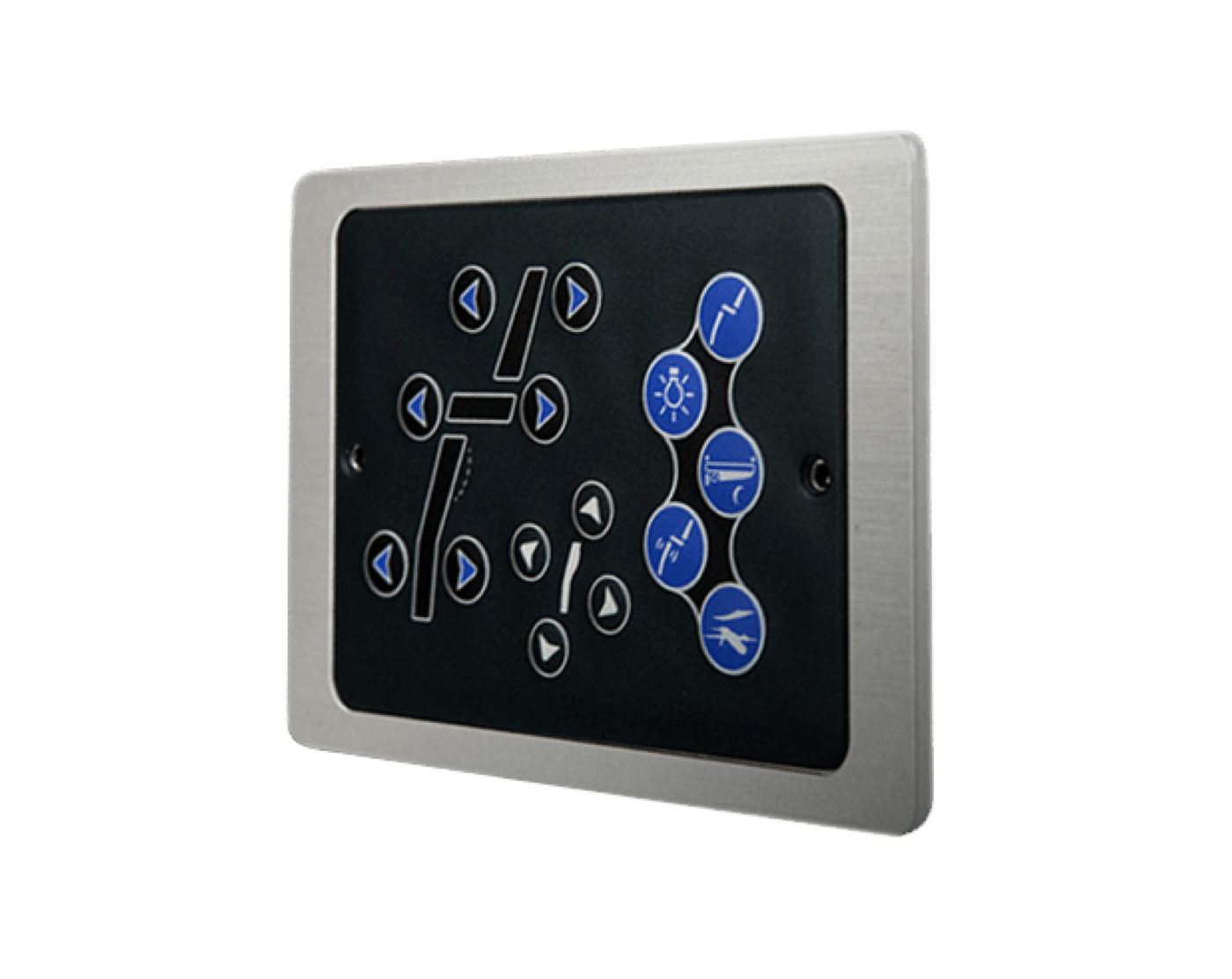Innovations in Membrane Switches for Touch-Sensitive Devices
Innovations in Membrane Switches for Touch-Sensitive Devices
Blog Article
Recognizing the Significance of Membrane Switches in Interface
Membrane buttons are essential components in the design of efficient user interfaces, facilitating not only capability but additionally improving visual appeal and individual interaction. As we check out the numerous benefits and future trends connected with Membrane innovation, it comes to be clear that these buttons are extra than simply components; they represent a convergence of innovation and practicality.
What Are Membrane Switches?

The spacer layer, which includes glue properties, enables the splitting up of the circuit layer from the overlay, making sure that the switch remains in a non-activated state till pushed. When pressure is put on the overlay, it presses the spacer layer, connecting the gap and finishing the circuit in the underlying layer. This style not only reduces the physical room required for traditional mechanical buttons however also boosts the toughness of the device, as Membrane switches are generally immune to dust, dampness, and various other ecological variables.
Typically found in applications ranging from customer electronics to medical gadgets, Membrane switches are indispensable to modern innovation, giving a effective and easy to use user interface that aligns with modern design requirements.
Benefits of Membrane Switches
While numerous button technologies exist, Membrane Switches offer distinct benefits that make them particularly preferable in various applications. One of the primary advantages of Membrane buttons is their compact style, which allows for space-saving implementations in tools where property is restricted. Their thin profile not only improves aesthetic appeal however additionally assists in light-weight construction.
An additional significant advantage is their resistance to environmental elements. Membrane buttons are typically secured against wetness, dust, and contaminants, making them perfect for usage sought after atmospheres, such as clinical tools and industrial equipment. This toughness expands the lifespan of the switch, decreasing maintenance expenses and boosting integrity.
Moreover, Membrane switches can be customized to meet particular style demands, including one-of-a-kind graphics and shades that boost customer communication. Their responsive responses alternatives can additionally be customized to give a satisfying user experience. Furthermore, Membrane buttons are cost-effective, particularly in high-volume applications, as they can be produced successfully.
Applications in Different Industries

In the customer electronics market, Membrane buttons prevail in gadgets such as microwaves, washing machines, and remotes. Their responsive feedback and visual options boost individual experience while providing a streamlined, contemporary appearance. Furthermore, automotive suppliers use Membrane switches in control panel controls and infotainment systems, where room is limited, and customer engagement is critical.
Additionally, the industrial market leverages Membrane switches in control panels for equipment and equipment, enabling intuitive procedure in often extreme environments. Their resistance to chemicals and wetness ensures durability and integrity in these applications. In general, the flexibility of Membrane Switches adds considerably to their extensive usage, making them important in numerous technological domains.
Layout Considerations for Membrane Switches

When developing Membrane buttons, numerous vital considerations should be taken right into account to make certain optimal functionality and user experience. First of all, the option of products is essential; picking durable, top quality substrates can improve the switch's durability and resistance to ecological aspects such as dampness and temperature level variations.
Secondly, the design check this of the graphic overlay need to focus on clearness and simplicity of use. Icons and message have to be understandable, and the format must assist in user-friendly interaction (membrane switches). In addition, responsive comments is vital; incorporating a tactile dome or other devices can boost the individual experience by offering physical verification of activation
An additional essential factor is the button's electric performance. Developers need to ensure that the conductive traces are correctly developed to minimize resistance and stay clear of signal interference. This entails examining the required actuation pressure and making sure compatibility with the electronic parts they will user interface with.

Future Fads in Membrane Innovation
As technology proceeds to advance, Membrane buttons are poised to progress significantly, driven by advancements in materials and producing strategies. One emerging pattern is the unification of advanced products, such as versatile substratums and conductive inks, which enhance toughness and reduce the general weight of Membrane buttons. These materials not only enhance the responsive response however likewise permit for the design of switches that can stand up to harsher ecological conditions.
Additionally, the combination of touch-sensitive modern technologies is changing traditional Membrane Switches into more interactive user interfaces. Capacitive touch sensors installed within Membrane button panels can provide a much more instinctive and receptive user experience, aligning with the growing demand for smooth, contemporary layouts in customer electronic devices.
In addition, advancements in printing techniques, such as digital and 3D printing, enable rapid prototyping and personalization of Membrane switches. This flexibility allows producers to respond quicker to market demands and consumer preferences.
Lastly, sustainability is becoming a significant emphasis, with suppliers discovering green products and procedures. As these patterns unfold, the future of Membrane modern technology assures boosted performance, aesthetic appeal, and environmental duty, strengthening their duty in innovative individual interfaces across my link various sectors.
Verdict
In verdict, Membrane Switches stand for a crucial element in the layout of customer interfaces, incorporating capability with aesthetic versatility. As developments in innovation continue, the evolution of Membrane switches is expected to further refine user interfaces, driving technology and boosting functionality in a significantly complex technical landscape.
Membrane switches are essential elements in the layout of effective individual interfaces, promoting not only performance yet additionally enhancing aesthetic charm and customer interaction.Membrane Switches serve as an essential part in various individual interfaces, assisting in a smooth communication between users and electronic gadgets.While countless button technologies exist, Membrane Switches offer distinct advantages that make them especially desirable in different applications.In addition, Membrane buttons can be tailored to meet specific design demands, integrating special graphics and shades that improve individual communication.In final thought, Membrane Switches represent an important element in click reference the style of user interfaces, combining functionality with visual adaptability.
Report this page